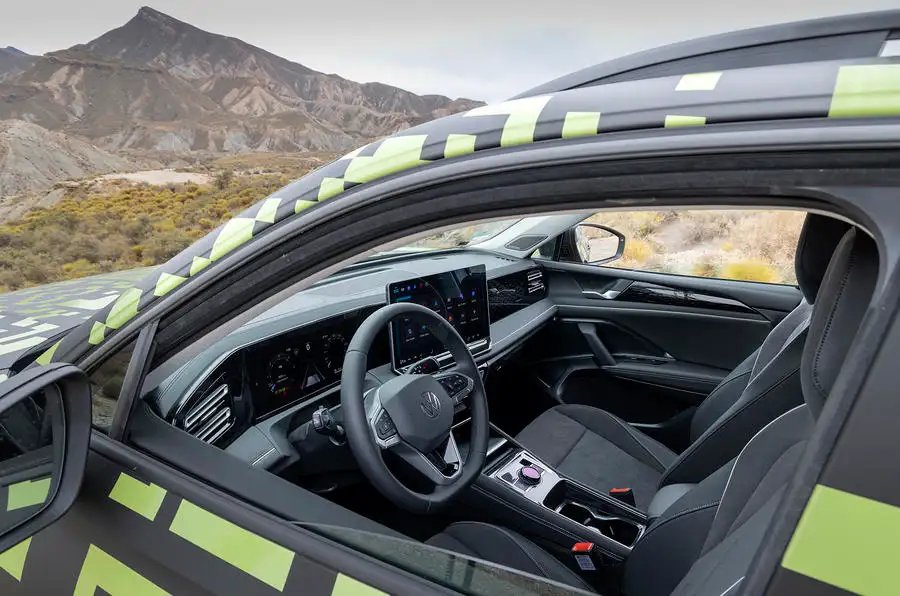Volkswagen CEO on fixing 'frustrating' interiors that 'did a lot of damage'

Volkswagen CEO Thomas Schäfer says the introduction of widely criticised touch-sensitive controls in his brand's cars "definitely did a lot of damage" and he has pledged to usher in simpler, more functional interiors in all future cars.
Speaking to Autocar at the recent pre-production launch for the next-generation Volkswagen Tiguan, Schäfer pointed to the revamped crossover's cabin – a near-total departure from that of the Volkswagen ID 3 and Volkswagen Golf – as a statement of intent for future Volkswagens.
The Tiguan now comes with the choice of two, much larger infotainment touchscreens and is still light on physical controls.
But the most vocally critiqued elements of recent VW control suites – including the unlit climate control sliders and haptic steering wheel buttons – have been removed, and a new rotary controller has been installed on the centre console for quick access to drive mode and volume settings.
It's all part of a move, Schäfer says, to address criticism from customers and make Volkswagen cars easier to operate.
Asked if the unconventional interior arrangements introduced under his predecessor Herbert Diess had threatened Volkswagen's standing among loyal customers, Schäfer said they "definitely did a lot of damage".
He added: "We had frustrated customers who shouldn't be frustrated. So we've spent a lot of time now – working through really systematically – on what all the functions are that a customer usually touches when using a vehicle.
"We rank them. What are the most important ones? Which ones need to go on buttons? Which one needs to go on the screen? First level, second level, third level? And where do you intuitively reach when you want to switch on the light?"
After this process is complete, he said, the discussion becomes more granular: "Should it be a button? Should it be a switch? And then you can work on the aesthetics of it. When you do buttons, it's better to do few buttons, but really nice buttons - like an aeroplane: what are the haptics of it?
"We worked through this with a massive team. It took us quite a bit of time. It was an Excel spreadsheet as big as a room, but you have to do that."
Schäfer's commitment to establishing certain consistencies across the Volkswagen line-up extends to ensuring replacements for each model don't introduce yet another bold rethink in cabin layout, once the desired formula is achieved.
He said: "Once you have it, don't touch it again. Bloody leave it. Don't confuse our customers every time a new model comes out and something is completely different. Optimise it. Bring into the future. But don't change buttons from here to there, to there and here. At Volkswagen, we were always great for sitting in the car and you know where everything is immediately, intuitively.
"And that's what we've done now, and we will see that coming through, specifically on the ID 2 onwards. Those cars will be top-notch again."
Following the Tiguan, the next Volkswagens to benefit from this initiative will be the new-generation Passat and updated Golf, due to be revealed later this year.
It remains to be seen how extensively the company will overhaul the minimalist cabin design of its ID electric cars, but the production version of the ID 2All concept, due in 2025, is set to mark a radical departure from the existing ID 3, ID 4, ID 5, ID 7 and ID Buzz.
Related News


